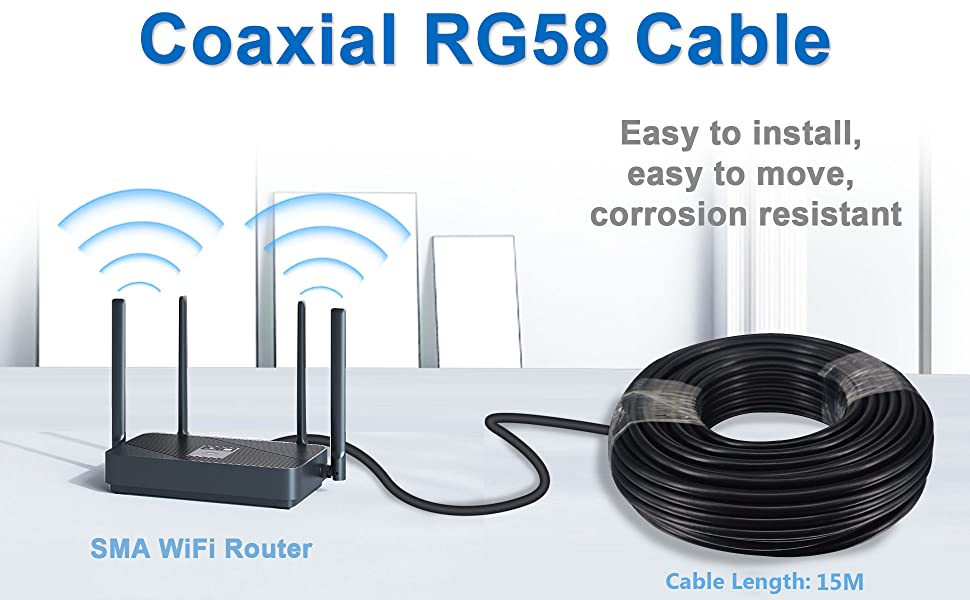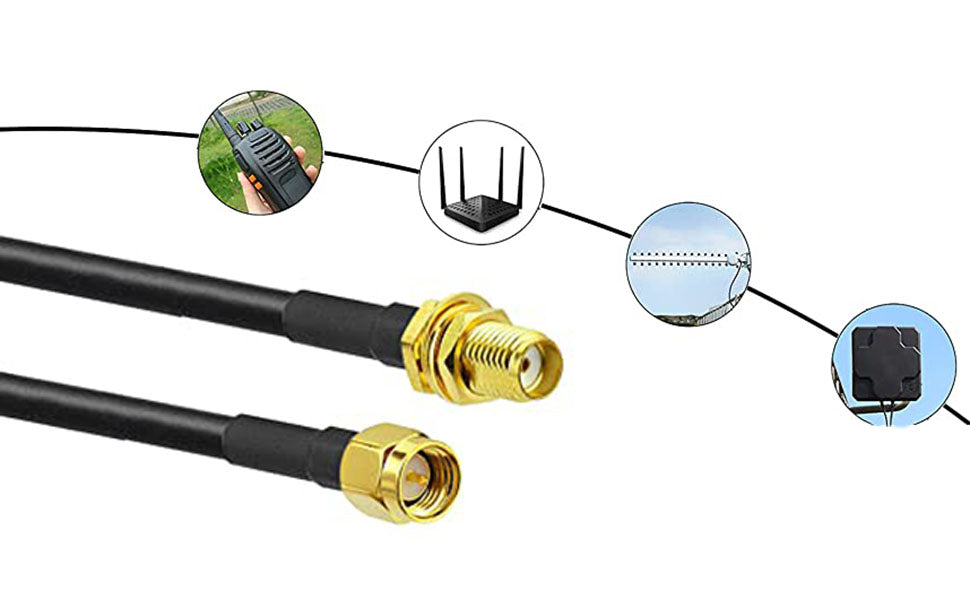Unveiling the Wonders of RF Coaxial Cables: A Deep Dive into Their Functionality and Applications
投稿者 :LiYu on

Introduction
In today's hyper-connected world, where communication forms the backbone of modern technology, the significance of reliable data transmission cannot be overstated. At the heart of this connectivity lies the humble yet indispensable RF coaxial cable. Used in a plethora of applications ranging from telecommunications to aerospace, RF coaxial cables are the unsung heroes that enable seamless and efficient transmission of radio frequency signals. In this comprehensive article, we'll embark on a journey to unravel the intricacies of RF coaxial cables, exploring their construction, functionality, advantages, and diverse applications across various industries.

Understanding RF Coaxial Cables
RF coaxial cables, often simply referred to as coaxial cables, are a specialized type of cable designed to transmit high-frequency signals with minimal signal loss. The name "coaxial" stems from the cable's layered structure, where two conductors share a common axis. This unique design imparts several advantages, making coaxial cables a preferred choice for high-frequency applications.
Construction and Components
-
Inner Conductor: At the core of an RF coaxial cable lies the inner conductor, typically made of copper or aluminum. This conductor carries the electrical signal and is surrounded by an insulating material to prevent signal leakage.
-
Dielectric Layer: Surrounding the inner conductor is the dielectric layer, which acts as an insulator to keep the signal confined within the cable. Common dielectric materials include polyethylene, polypropylene, and PTFE (polytetrafluoroethylene).
-
Shielding: The dielectric layer is encased in a metallic shield, which serves to contain the electromagnetic fields generated by the signal. This shield prevents external interference and minimizes signal loss, thus ensuring signal integrity.
-
Outer Jacket: The entire cable assembly is protected by an outer jacket made of materials like PVC (polyvinyl chloride) or TPE (thermoplastic elastomer). The jacket shields the cable from physical damage, moisture, and environmental factors.
Functionality and Advantages
RF coaxial cables are engineered to provide several key advantages, making them a staple in various industries:
-
Signal Integrity: The layered construction of coaxial cables ensures that the signal remains well-contained within the cable, reducing the likelihood of signal distortion or interference.
-
Low Loss: Coaxial cables exhibit low signal loss, enabling the transmission of signals over considerable distances without significant degradation.
-
Shielding: The metallic shielding of coaxial cables makes them highly resistant to electromagnetic interference, ensuring reliable signal transmission even in noisy environments.
-
Broad Frequency Range: Coaxial cables are designed to handle a wide range of frequencies, from audio frequencies to microwave frequencies, making them suitable for diverse applications.
-
Flexibility: The outer jacket provides mechanical flexibility, allowing coaxial cables to be bent and routed without compromising signal quality.
-
Easy Installation: Coaxial cables are relatively easy to install and terminate, making them a popular choice for both professionals and enthusiasts.

Applications of RF Coaxial Cables
The versatility of RF coaxial cables is reflected in their widespread use across numerous industries:
-
Telecommunications: Coaxial cables serve as the backbone for cable television (CATV) systems, delivering high-quality video and audio signals to homes. They are also used in cell towers for signal distribution.
-
Broadcasting: In radio and television broadcasting, coaxial cables connect broadcasting equipment, ensuring clear transmission of signals to broadcasting stations.
-
Aerospace and Defense: Coaxial cables are integral to radar systems, satellite communication, and military equipment due to their ability to withstand harsh environmental conditions.
-
Medical Imaging: Medical applications like MRI (magnetic resonance imaging) and X-ray machines use coaxial cables to transmit high-frequency signals essential for imaging.
-
Wireless Communication: Coaxial cables are employed in wireless networks and cellular base stations to carry signals between antennas and network equipment.
-
Test and Measurement: In laboratories and industries, coaxial cables facilitate accurate signal measurements in various testing and measurement setups.
-
Automotive: Modern vehicles rely on coaxial cables for various communication systems, such as GPS, infotainment, and vehicle diagnostics.
-
Industrial Automation: Coaxial cables play a role in industrial automation setups, connecting sensors, controllers, and other equipment.
-
Energy Sector: Coaxial cables find application in power plants for transmitting control signals and monitoring equipment status.
Choosing the Right Coaxial Cable
Selecting the appropriate coaxial cable for a specific application requires considering factors such as frequency range, impedance, attenuation, and environmental conditions. Different types of coaxial cables, including RG-6, RG-11, and LMR, are designed to cater to varying requirements.
Future Trends and Innovations
As technology continues to advance, so do the capabilities of RF coaxial cables. Innovations include enhanced shielding techniques, low-loss dielectric materials, and improvements in connector design for higher data rates. These developments ensure that coaxial cables remain a relevant and dependable solution for future communication needs.
Conclusion
In a world where connectivity is the cornerstone of progress, RF coaxial cables stand as vital components that enable seamless data transmission across a myriad of applications. From telecommunications to aerospace and beyond, coaxial cables play an indispensable role in ensuring reliable, low-loss signal propagation. Their unique construction and characteristics make them a go-to choice for high-frequency applications where signal integrity is paramount. As technology evolves, so too will the capabilities of coaxial cables, solidifying their position as essential components in our interconnected world.
この投稿をシェアする
- 0件のコメント
- タグ: Coaxial cable, Dielectric material, High-frequency communication, Impedance matching, RF cable, Signal integrity, Signal transmission
